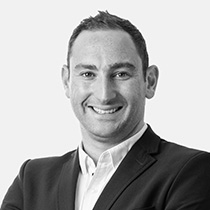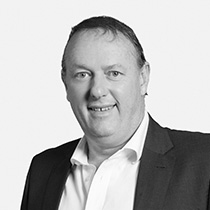PERFORMANCE
The Fund increased by 5.6% in USD in the first quarter of 2024 (Q1-24). The quarter continued to provide strong market returns, building on those from Q4-23. However, a key difference was a wider breadth of return. These strong returns were delivered notwithstanding rate-cutting expectations being tempered somewhat as robust economic data continues to come out of the US. The Fund continues to claw back performance; over the last 12 months, it has delivered 11.2% in USD. Notwithstanding this performance, we remain incredibly excited about the prospective returns for the Fund thanks to a diversified collection of attractive assets held in the portfolio. Aggregate index levels appear fully valued, and thus, we are not very optimistic about future aggregate market returns, especially in the US, but we continue to find compelling individual assets that should deliver robust absolute returns.
During the quarter, we saw a high level of market exuberance, especially when it came to what market participants deem AI beneficiaries. The SOX Index, which is a representation of semiconductor-related companies, delivered a 22% USD return for the quarter as there was a frenzied rush toward semiconductor-related stocks. This was an interesting trend to observe as there didn’t seem to be much differentiation between stocks in this bucket despite a substantial difference in underlying AI-related exposure. We think this is a function of factor-related investing, which puts a collection of stocks in a similar bucket that might appear reasonable at a high level, but when more detailed fundamental analysis is performed, the bucket might not actually represent what is written on the tin, thereby exposing investors to risks they might not fully appreciate. Market sentiment remains positive, but material geopolitical risks persist on the horizon due to the upcoming US election, ongoing wars in both the Middle East and Ukraine, and a continued strained relationship between the US and China. While we don’t have a strong view of how these risks might manifest and are always cautious about making definitive macro calls, it does not seem like the market is expecting many negative outcomes from these risks. The Fund, however, owns a collection of assets that are well diversified with distinct drivers that should allow it to generate good returns, notwithstanding any of these risks coming to fruition. This comes back to a key principle in how we manage risk, which is that the price you pay for an asset and the margin of safety embedded is our most effective risk mitigation tool. Considering this, the weighted average equity upside of the Fund is currently 53%, which remains compelling. Beyond this, the weighted equity five-year expected IRR is 19%, and the weighted equity FCF yield for stocks owned is ~6.5%. Using the rand-denominated Fund’s long-term track record (expressed in USD) as proxy*, over the past five years, the Fund has generated a positive return of 2.7% per annum (p.a.), over 10 years a return of 3.2% p.a. and, since inception 24 years ago, 8.1% p.a.
During the quarter, the largest positive contributors were Interactive Brokers (+35%, 0.66% positive impact), ASML (+28%, 0.65% positive impact), Airbus (+19%, 0.64% positive impact) and Meta (+38%, 0.62% positive impact). The largest negative contributors were Pepco (-32%, 0.60% negative impact), Pinduoduo (-20%, 0.44% negative impact) and HDFC Bank (-16%, 0.44% negative impact).
FUND POSITIONING
The Fund ended the quarter with 78% net equity exposure, slightly lower than the prior quarter. The Fund also has put option protection, equating to 4% of Fund effective exposure (approximately 30% nominal exposure) spread across a range of indices (US, Europe, and EM).
As equity markets rallied in the quarter, bond markets lagged due to interest rate cut expectations being tempered. The Fund still has ~10% exposure to sovereign and corporate bonds, a higher level versus the past due to the attractive yields on offer. The current weighted yield for the collection of bonds held is ~6%, or 8% when excluding the short-term (two-year) US Treasuries, which are seen as an alternative to cash. This level of yield in hard currency is far more attractive than what we have observed in the past decade.
We have limited exposure to real estate, with the balance of the Fund invested in cash, largely offshore.
Notable increases in position sizes (or new buys) during the quarter were Alight (US software), London Stock Exchange (UK online exchange), and Nippon Sanso Holdings (Japanese industrial gas).
Alight is a US software business that focuses on payroll, benefits administration, HR software, and pension plan administration. It services 50% of Fortune 500 companies, and its contracts are recurring in nature and have high revenue visibility. The business has been on a three-year transformation journey with a focus on cost-saving and transitioning to a simple platform, thereby improving the customer experience and enabling additional cross-selling. As the last leg of this transformation journey, the company also recently sold their professional service business that was involved in software implementation projects which is less profitable with worse economics when compared to the core software business. The remaining business now has a high margin and is more cash-generative, with growth going forward being driven by increased cross-selling enabled by a simple, standardised platform and continued contract wins due to their superior offering compared to peers. The business trades on 11 times 2025 earnings, which should continue to grow in the double digits – this is compelling.
The London Stock Exchange is a business we have followed for quite some time and which completed a transformative acquisition of Refinitiv in 2021, increasing their overall exposure to data analytics, a structurally growing market with excellent economics due to its high margin revenue and sticky customer base. Post-acquisition, both revenue and cost synergy targets have been raised, which points to good management execution. The business is very cash-generative, and this largely comes back to shareholders, along with spending on bolt-on acquisitions to augment their service offerings and grow their product suite. The business does not screen cheap on near-term multiples and is trading on 22 times 2025 earnings, but it has high visibility in both revenue and earnings and should continue to grow earnings at a mid-teens rate, and thus, the near-term multiple unwinds fairly quickly.
Nippon Sanso Holdings is an industrial gas company that exhibits many of the same positive characteristics as its global peers (Linde and Air Liquid), such as pricing power and customer stickiness, which drive revenue and earnings visibility. The opportunity for Nippon lies in that, for years, it has achieved lower margins compared to its peers, but a few factors are now driving change. The most notable is that numerous price increases are now being made in Japan, a market responsible for 35% of Nippon’s business, where persistent low inflation (or, at times, deflation) kept prices stagnant. The other key change was at the management level, where a new CEO and CFO are employing industry best practices. There is also potential optionality should the Japanese industrial sector start growing faster than history, which is a plausible scenario considering the weak yen and the reshoring from China and Taiwan due to geopolitical concerns. Overall, you have a business that is going through a structural positive change, also supported by external tailwinds. Nippon trades on 18 times 2025 earnings, which should grow in the high single digits as it continues to close the margin gap versus its global peers.
OUTLOOK
2024 started well with equity market exuberance, but it was encouraging to see return breadth widen, which has benefited the Fund thus far. We remain excited about the Fund’s prospects as we continue to uncover attractive opportunities, notwithstanding certain pockets of the market appearing expensive. We, therefore, believe our philosophy of bottom-up stock picking should drive robust absolute returns. Having said that, there remains a large amount of uncertainty in the world, but we continue to feel the best way to mitigate against that risk is by holding a collection of attractively-priced assets that provide diversification to achieve the best risk-adjusted returns going forward in a variety of future macro scenarios.
*Note that this is a new fund and, as such, does not yet have a track record for the relevant periods. As it is the dollar-denominated version of the same investment strategy deployed historically in the management of the rand-denominated Coronation Global Optimum Growth [ZAR] Feeder Fund, we show the track record of the latter portfolio, converted to US dollars, to indicate historical results achieved by the Strategy.
 South Africa - Personal
South Africa - Personal



